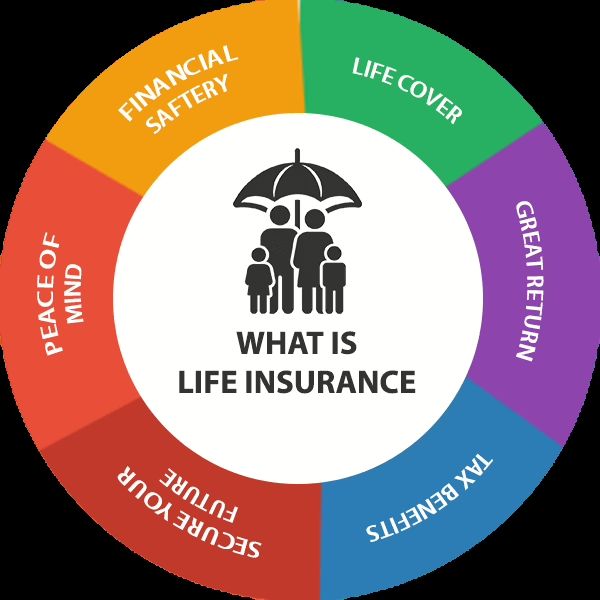Term Life vs. Whole Life Insurance: Which Policy Best Fits Your Financial Goals?
Life insurance is more than a financial safeguard—it’s a strategic decision. As individuals and professionals consider options to protect their families and plan their estates, the debate continues: term life or whole life insurance—which is better? This decision isn’t just about cost. It’s about aligning coverage with long-term financial goals, life stages, and risk tolerance.
What Is Term Life Insurance?
Term life insurance offers coverage for a defined period, typically 10, 20, or 30 years. It’s designed to provide financial support to beneficiaries if the policyholder passes away during the coverage term. If the term expires and the insured is still living, there’s no payout.
The primary advantage is affordability. For those early in their careers or starting families, term policies offer substantial coverage at low premiums. This makes term life an effective solution for covering short- to mid-term obligations such as mortgages, children’s education, or income replacement.
However, term policies do not build cash value, and renewing the policy at the end of the term often results in higher premiums due to age and health factors.
How Whole Life Insurance Works
Whole life insurance is a form of permanent life insurance, offering lifetime coverage and a savings component known as cash value. Part of each premium payment goes toward this cash value, which grows tax-deferred over time.
This type of policy guarantees a death benefit and level premiums. Additionally, policyholders can borrow against the cash value or withdraw funds, depending on the insurer’s terms. For those seeking lifetime coverage and long-term financial planning tools, whole life insurance can be a viable option.
But it comes at a premium—literally. Whole life policies are significantly more expensive than term policies, which may limit accessibility for those with tighter budgets or other financial priorities.
Cost Analysis: Term vs. Whole Life Insurance
Let’s break down the numbers. A healthy 30-year-old male might pay around $25 monthly for a 20-year term life policy with a $500,000 benefit. The same individual could expect to pay over $400 monthly for a comparable whole life policy.
That price difference highlights a critical factor in the decision: how important is the cash value accumulation and lifelong protection compared to immediate affordability and temporary needs?
Who Should Choose Term Life Insurance?
Term insurance often suits those with time-limited financial responsibilities:
- Young professionals building savings
- Parents protecting children’s future until adulthood
- Homeowners with large mortgages
- Individuals seeking income replacement until retirement
These are typically people who prioritize cost-effective protection during their working years and plan to self-insure through accumulated assets later in life.
When Whole Life Insurance Is a Better Fit
Whole life insurance is typically more appropriate for those who:
- Have long-term estate planning needs
- Want to build guaranteed cash value
- Need lifetime protection
- Wish to leave a tax-free inheritance
- Own businesses that require succession planning tools
The guaranteed growth and policy loans make whole life attractive to those seeking stability, conservative wealth accumulation, or financial flexibility later in life.
What About Cash Value in Whole Life Insurance?
One of whole life insurance’s key features is its cash value. It accumulates slowly at first, as a portion of your premiums covers fees and commissions. But over time, this value can become a source of emergency funds, retirement income, or a tool for wealth transfer.
Still, many financial professionals argue that investing the cost difference between term and whole life into low-cost index funds or retirement accounts can generate higher returns. The trade-off, then, is guaranteed stability versus potential market gains.

Hybrid Strategy: Best of Both Worlds
For many professionals, a blended insurance approach makes sense. This might involve:
- Starting with term life for immediate, high-coverage needs
- Converting to whole life later, using a policy with a built-in conversion feature
- Layering both types for a mix of short- and long-term protection
This strategy offers flexibility. Term policies cover income and debt during working years, while whole life builds cash value and provides estate-planning tools later.
Tax Benefits of Life Insurance
Both term and whole life policies provide tax-free death benefits. Whole life goes a step further with tax-deferred cash value growth and tax-free policy loans, making it an effective tool for reducing taxable estate values or supplementing retirement income.
These tax advantages are especially useful for high-net-worth individuals and business owners focused on asset preservation and wealth transfer.
Choosing Between Term and Whole Life Insurance
Consider these questions before selecting a policy:
- What’s your current life stage and income level?
- Are you more focused on affordability or long-term planning?
- Do you anticipate needing insurance beyond 20–30 years?
- Are you disciplined in investing elsewhere, or do you prefer guarantees?
There is no one-size-fits-all solution. The best policy depends on individual circumstances, financial goals, and tolerance for risk.
Advisors’ Role in Guiding Insurance Decisions
Financial advisors play a critical role in helping clients select the right insurance strategy. They must balance protection needs with liquidity goals, tax efficiency, and legacy plans. Importantly, they should help clients understand not just the cost, but the function of the insurance within a broader financial plan.
Emotional Factors in Life Insurance Choices
Life insurance decisions aren’t purely financial. There’s also a strong emotional component. Whole life insurance may appeal to those who value peace of mind and legacy. Term insurance appeals to those who see insurance as a temporary solution.
Recognizing these emotional undercurrents is key to understanding client preferences—and guiding them effectively.
Conclusion: Align Insurance With Life’s Milestones
Term and whole life insurance serve distinct purposes. Term life is ideal for short-term financial protection at a lower cost, while whole life supports long-term planning with guaranteed lifelong coverage and tax-advantaged savings.
Professionals should reassess life insurance needs periodically—especially during major life events like marriage, home buying, having children, or career changes.
There’s value in speaking with a knowledgeable advisor who can tailor a policy to your personal goals and financial landscape. Insurance should not be a one-time decision, but a dynamic part of your evolving strategy.
#LifeInsurance #TermLifeInsurance #WholeLifeInsurance #FinancialPlanning #WealthManagement #InsuranceStrategy #EstatePlanning #CashValueInsurance #LinkedInFinance #FinancialSecurity



